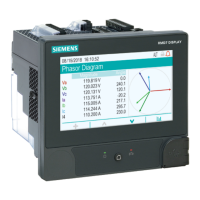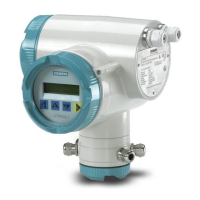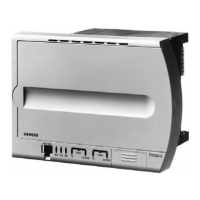Measurements 9810 series - User manual
249 7EN05-0390-08
•
COMTRADE: The meter can save waveform data in COMmon format for TRAnsient Data
Exchange (COMTRADE) format. COMTRADE data is available for download using an SFTP
client application.
•
Setpoint learning: You can configure your meter to learn certain disturbance-related values.
For example, what constitutes a sag, swell, transient, or high or low setpoint.
Power and power factor
The sampled measurements taken at the meter’s voltage and current inputs provide data for
calculating power and power factor.
In a balanced 3-phase alternating current (AC) power system source, the AC voltage waveforms
on the current-carrying conductors are equal but offset by one-third of a period (a phase angle
shift of 120 degrees between the three voltage waveforms).
Power factor (PF)
Power factor (PF) is the ratio of real power (P) to apparent power (S).
PF is provided as a number between -1 and 1 or as a percentage from -100% to 100%, where the
sign is determined by the convention.
A purely resistive load has no reactive components, so its power factor is 1 (PF = 1, or unity power
factor). Inductive or capacitive loads introduce a reactive power (Q) component to the circuit
which causes the PF to become closer to zero.
True PF and displacement PF
The meter supports true power factor and displacement power factor values:
•
True power factor includes harmonic content.
•
Displacement power factor only considers the fundamental frequency.
NOTE: Unless specified, the power factor displayed by the meter is true power factor.
Apparent, active, and reactive power (PQS)
Apparent power (S) is the capacity of your measured power system to provide active (real power,
P) and reactive power (Q).
A typical AC electrical system load has both resistive and reactive (inductive or capacitive)
components. Resistive loads consume real power (P). Reactive power (Q) is either consumed
(inductive loads) or generated (capacitive loads).

